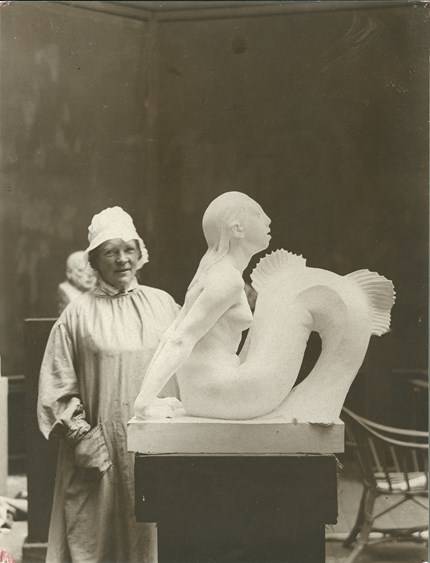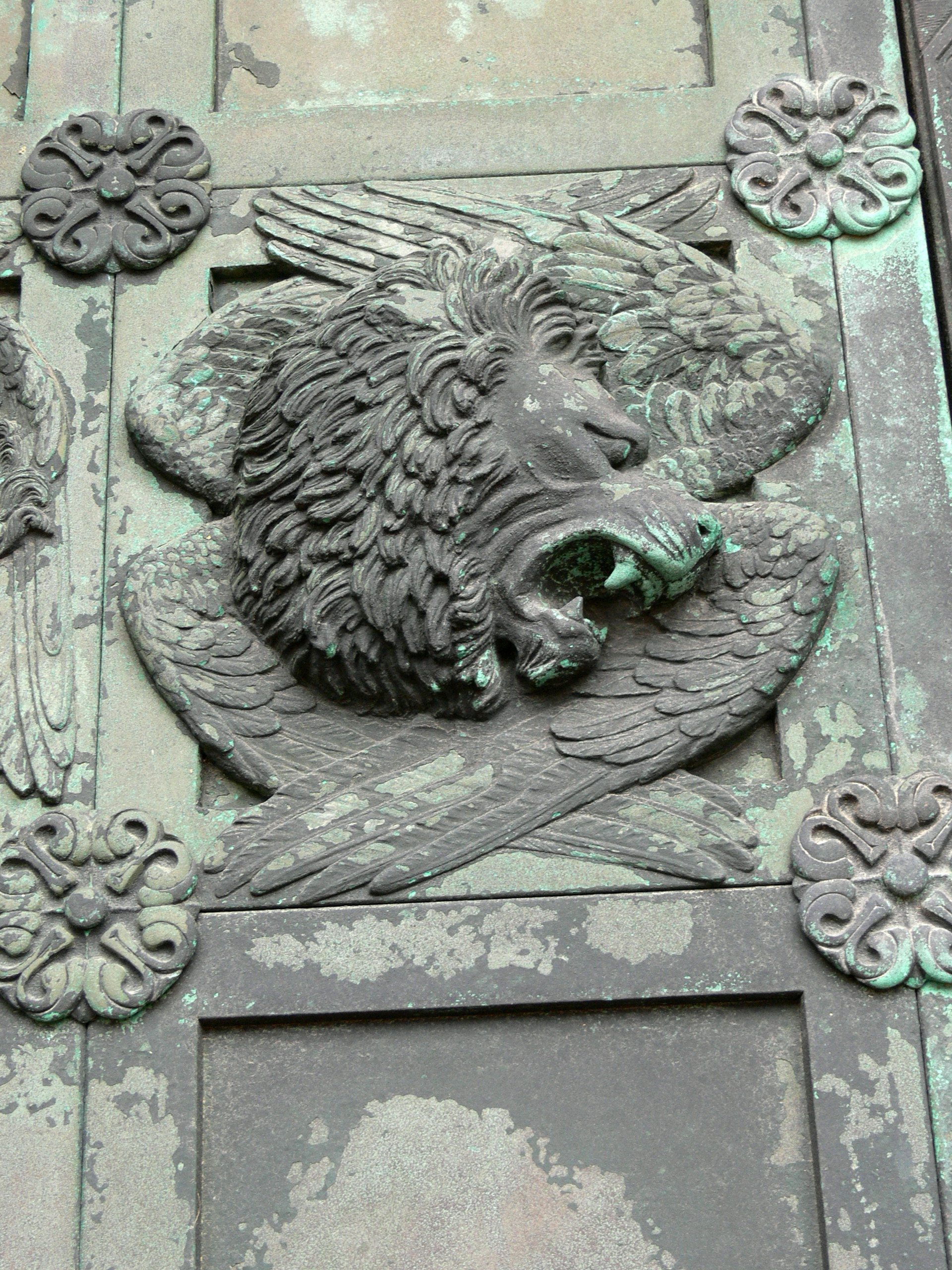|
Mermaid (Carl-Nielsen)
''Mermaid'' (Danish language, Danish: Havfrue) is a bronze sculpture designed by the Denmark, Danish sculptor Anne Marie Carl-Nielsen, depicting a mermaid. The original bronze cast from 1921 is on display in the Statens Museum for Kunst, Danish National Gallery while another cast was installed at Christians Brygge outside the Black Diamond (library), Royal Danish Library in Copenhagen in 2009. The original plaster model is owned by the Carl Nielsen Museum and is on display in the Funen Art Museum in Odense. Carl-Nielsen depicts her mermaid in a more dramatic pose than that of Edvard Eriksen's far more famous and nine years older The Little Mermaid (statue), ''Little Mermaid'' at Copenhagen's Langelinie promenade. History Little is known about the creation of the sculpture. One of Carl-Nielsen's sketchbooks contains some sketches of mermaids but it is not known when they were made or if it was in connection with the creation of the mermaid sculpture. It is unknown if she was inspire ... [...More Info...] [...Related Items...] OR: [Wikipedia] [Google] [Baidu] |
Anne Marie Carl-Nielsen
Anne Marie Carl-Nielsen (born Anne Marie Brodersen; 21 June 1863 – 21 February 1945) was a Danish sculptor. Her preferred themes were domestic animals and people, with an intense, naturalistic portrayal of movements and sentiments. She also depicted themes from Nordic mythology. She was "one of the first women to be taken seriously as a sculptor," a trend-setter in Danish art for most of her life. She was married to the Danish composer Carl Nielsen. Early life Brodersen was born on Thygesminde, a large farm estate in South Stenderup, near Kolding. Her father Povl Julius Brodersen served in the German Dragoons before purchasing the farm. He married Friderikke Johanne Kirstine Gilling, who was his housekeeper. The Brodersens were "successful, daring people", some of the first to import livestock directly from England. Anne Marie was thus familiar with farming and animals from an early age. Her first work, a small sheep using clay from the farm garden, dates from 1875. From ... [...More Info...] [...Related Items...] OR: [Wikipedia] [Google] [Baidu] |
The Little Mermaid
"The Little Mermaid" ( da, Den lille havfrue) is a literary fairy tale written by the Danish author Hans Christian Andersen. The story follows the journey of a young mermaid who is willing to give up her life in the sea as a mermaid to gain a human soul. The tale was first published in 1837 as part of a collection of fairy tales for children. The original story has been a subject of multiple analyses by scholars such as Jacob Bøggild and Pernille Heegaard as well as the folklorist Maria Tatar. These analyses cover various aspects of the story from interpreting the themes to discussing why Andersen chose to write a tragic story with a happy ending. It has been adapted to various media, including musical theatre, anime, ballet, opera, and film. There is also a statue portraying the mermaid in Copenhagen, Denmark, where the story was written and first published. Plot summary The Little Mermaid lives in an underwater kingdom with her widowed father ( Mer-King), her dowager grand ... [...More Info...] [...Related Items...] OR: [Wikipedia] [Google] [Baidu] |
Plaster Sculptures In Denmark
Plaster is a building material used for the protective or decorative coating of walls and ceilings and for moulding and casting decorative elements. In English, "plaster" usually means a material used for the interiors of buildings, while "render" commonly refers to external applications. Another imprecise term used for the material is stucco, which is also often used for plasterwork that is worked in some way to produce relief decoration, rather than flat surfaces. The most common types of plaster mainly contain either gypsum, lime, or cement,Franz Wirsching "Calcium Sulfate" in Ullmann's Encyclopedia of Industrial Chemistry, 2012 Wiley-VCH, Weinheim. but all work in a similar way. The plaster is manufactured as a dry powder and is mixed with water to form a stiff but workable paste immediately before it is applied to the surface. The reaction with water liberates heat through crystallization and the hydrated plaster then hardens. Plaster can be relatively easily worked w ... [...More Info...] [...Related Items...] OR: [Wikipedia] [Google] [Baidu] |
Bronze Sculptures In Copenhagen
Bronze is an alloy consisting primarily of copper, commonly with about 12–12.5% tin and often with the addition of other metals (including aluminium, manganese, nickel, or zinc) and sometimes non-metals, such as phosphorus, or metalloids such as arsenic or silicon. These additions produce a range of alloys that may be harder than copper alone, or have other useful properties, such as strength, ductility, or machinability. The archaeological period in which bronze was the hardest metal in widespread use is known as the Bronze Age. The beginning of the Bronze Age in western Eurasia and India is conventionally dated to the mid-4th millennium BCE (~3500 BCE), and to the early 2nd millennium BCE in China; elsewhere it gradually spread across regions. The Bronze Age was followed by the Iron Age starting from about 1300 BCE and reaching most of Eurasia by about 500 BCE, although bronze continued to be much more widely used than it is in modern times. Because historical artworks were ... [...More Info...] [...Related Items...] OR: [Wikipedia] [Google] [Baidu] |
Outdoor Sculptures In Copenhagen ''
{{disambiguation ...
Outdoor(s) may refer to: *Wilderness *Natural environment *Outdoor cooking *Outdoor education *Outdoor equipment *Outdoor fitness *Outdoor literature *Outdoor recreation *Outdoor Channel, an American pay television channel focused on the outdoors See also * * * ''Out of Doors'' (Bartók) *Field (other) *Outside (other) *''The Great Outdoors (other) The Great Outdoors may refer to: * The outdoors as a place of outdoor recreation * ''The Great Outdoors'' (film), a 1988 American comedy film * ''The Great Outdoors'' (Australian TV series), an Australian travel magazine show * ''The Great Outd ... [...More Info...] [...Related Items...] OR: [Wikipedia] [Google] [Baidu] |
Sculptures By Anne Marie Carl-Nielsen
Sculpture is the branch of the visual arts that operates in three dimensions. Sculpture is the three-dimensional art work which is physically presented in the dimensions of height, width and depth. It is one of the plastic arts Plastic arts are art forms which involve physical manipulation of a plastic medium by molding or modeling such as sculpture or ceramics. Less often the term may be used broadly for all the visual arts (such as painting, sculpture, film and pho .... Durable sculptural processes originally used carving (the removal of material) and modelling (the addition of material, as clay), in stone, metal, ceramics, wood and other materials but, since Modernism, there has been an almost complete freedom of materials and process. A wide variety of materials may be worked by removal such as carving, assembled by welding or modelling, or moulded or cast. Sculpture in stone survives far better than works of art in perishable materials, and often repres ... [...More Info...] [...Related Items...] OR: [Wikipedia] [Google] [Baidu] |


.png)


